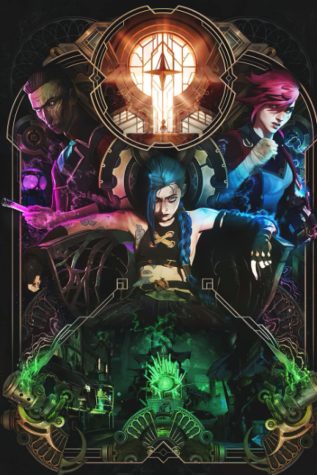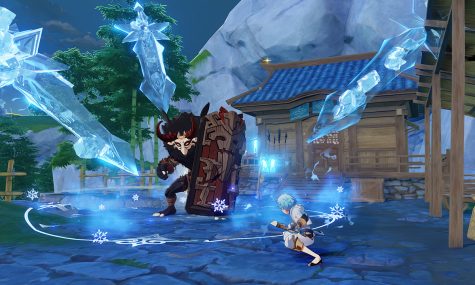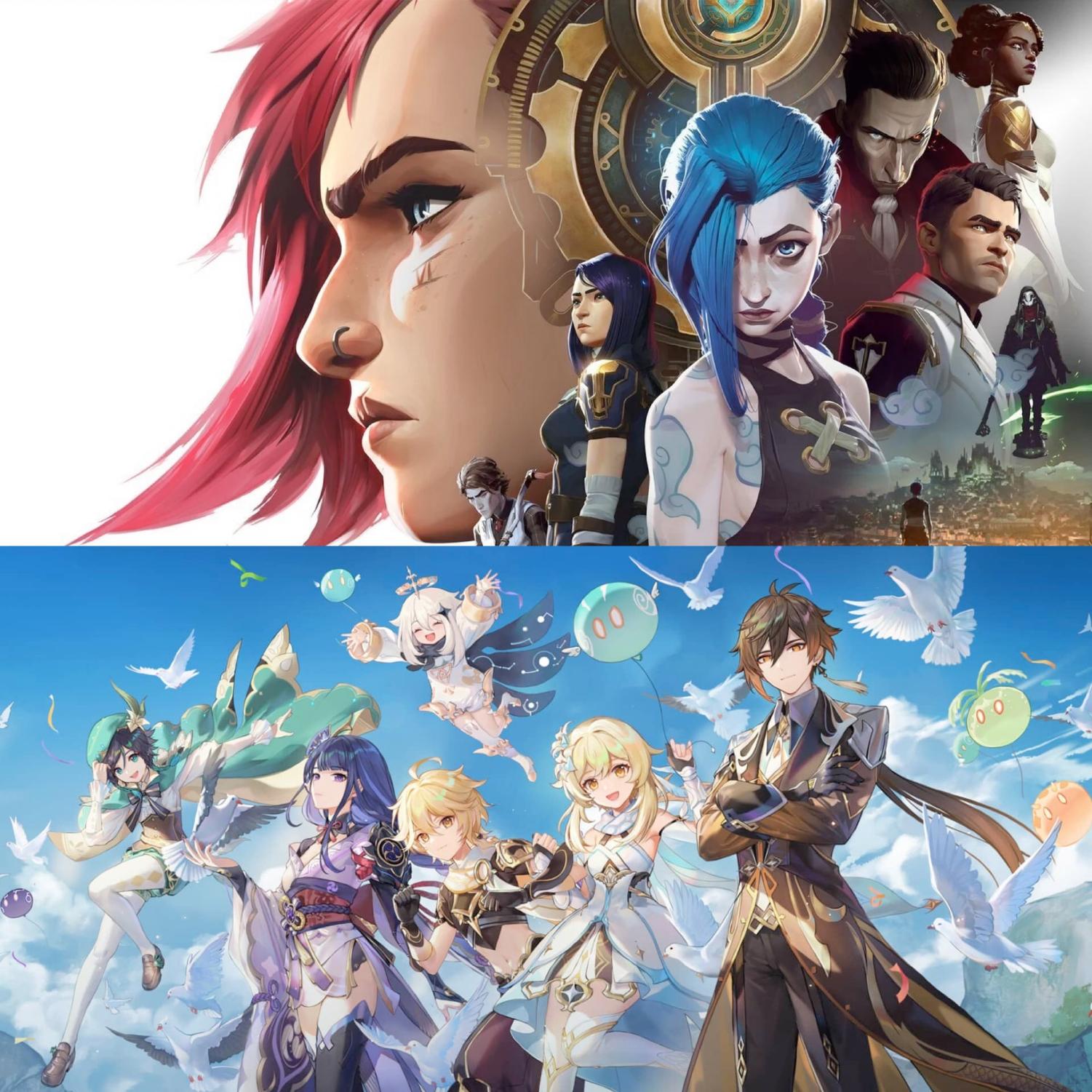A Gaming World Update: League of Legends’ Arcane and Genshin Impact
A review of the Netflix original series "Arcane" and a review of "Genshin Impact"
February 19, 2022
The Magic of Arcane
by Aadhithan Arivalagan
League Of Legends. It’s certainly an experience. The players are notoriously toxic, and the sheer amount of cringeworthy moments that come from that game are enough to put you in the hospital for overexposure to harmful substances. However, in November, a Netflix original series was released that purged the stigma around the game just off of its own excellence. It’s none other than Arcane, a show based on the characters and plot of League of Legends that expertly weaves in the best parts of the game for the viewer to enjoy.
The show is split into three different parts with each storyline happening years after the preceding set of episodes. The story centers around Violet and Powder, two sisters who stumble into a twisted web of politics and war that makes up the city of Piltover. As they try to navigate it, they ultimately head deeper and deeper into the web’s center.
As mentioned earlier, Arcane is based on League’s story and characters, but it thankfully requires no insider knowledge to understand, unlike certain other video game adaptations. With this in mind, the story they weave together is excellent. The character-focused story revolves around the worlds of Piltover and its underground, creating a story of class conflict from the very start of the show. Like Violet and Powder, we are left to connect the threads to uncover the mysteries and intricacies of this world. Throughout the course of the series, we follow multiple different characters in their journey to not only discover more about the environment they live in, but also to advance their own goals. Of course, this type of storytelling wouldn’t work without compelling characters, but Arcane nails this.
Violet and Powder, our two main characters, are both intriguing in the growth of their characterization throughout the show. Their voice actors, Hailee Steinfield and Ella Purnell, both knock their roles out of the park, and their ability to convey emotion through their voices is nothing short of incredible. In addition to this, our other characters also are as interesting as the main ones–if not even more so. Two scientists, Jayce and Viktor, both advance the technology and world-building in Arcane so much so that we get to see the city evolve throughout the course of the show.

The conflicts these characters face vary, ranging from self-inflicted damage to injury from other characters, like Silco. Silco is as close to a villain as Arcane gets, as the show continually maintains that not everything is black and white.
He commits unspeakable acts, such as murder, in service of his own goals, and yet his actions have reasons behind them. He too cares for others, just like the rest of the cast, all while being the most polarizing character in the whole show. This is what makes the show is so amazing: it doesn’t treat its audience like toddlers, allowing the viewer to draw their own conclusions from its nuanced, developed characters. Of course, the story is nothing without a proper medium to convey it, and yet again, Arcane does it perfectly.
Arcane is animated by the French studio Fortiche, and they absolutely nailed its production. The animation, which blends 3D models with 2D animation in a way similar to Into The Spiderverse, is further enhanced by the excellent VFX. The haunting neon spray paint used to embellish scenes is used perfectly to elevate fight sequences, and the soundtrack goes along insanely well with each scene. For example, “Dynasties and Dystopia,” played during a climatic battle in the series, heightens the dramatism of the fight. This show would not be nearly as good as it is if it was presented in a different medium, and Fortiche proved that there are some things that can only be done using animation.
Overall, Arcane was a riveting experience that kept me on the edge of my seat. The animation excellently conveyed an already amazing story, and I am excited for whatever wizardry Riot Games puts out next.
Travel to the World of Teyvat!
by Faith Borrello and Bianca Sutioso

Genshin Impact, an action role-playing game developed by miHoYo, has quickly become one of the most successful games in the world. Set in the fictional world of Teyvat, you play as the Traveler, an outsider from another world in search of their lost twin. The Traveler journeys through each of the seven nations, each designed around a signature element: Anemo, Geo, Electro, Dendro, Hydro, Pyro, or Cryo.
Genshin Impact boasts breathtaking landscapes along with detailed world-building and intricate lore. Its open-world experience features unique regions and sub-areas with their own aesthetics, puzzles, and enemies. Genshin rewards Travelers that go above and beyond in their exploration with various items and the game takes full advantage of its open-world format—there’s literally chests on the rooftops of Mondstadt, the first nation you encounter.
It’s easy to lose yourself exploring new areas or revisiting old ones even without a specific quest to guide you. Moreover, the game features a slew of World Quests where you interact with non-playable characters (NPCs), which provide an opportunity to explore areas you may have never interacted with. World Quests provide a wonderful opportunity to explore each region’s history and culture and the unique stories of its citizens.

Genshin Impact’s combat system features a party of four characters, each designed around one of the seven elements that can be switched when fighting. Applying two elements to a target will result in an elemental reaction, which varies depending on which elements you put together. The feature adds an extra layer of strategy as players have to put more thought into their party to create the desired reaction.
While the elemental reaction system is entertaining, Genshin’s combat can often feel bland. During quests, it can feel as though you are forced to fight enemies simply for the sake of fighting, rather than to advance the plot.
Though quests occasionally introduce exciting new gameplay mechanics, you are typically stuck fighting the same enemies that often don’t provide much of a challenge. Furthermore, since many of Genshin’s quests are gated by Adventure Rank, the game’s level system, it can begin to feel tedious fighting these enemies over and over again.
Genshin Impact’s best feature is the immersive open-world environment, providing hours of exciting in-game content from fishing to building your own housing system; the plethora of material keeps players well entertained. Though every journey will eventually come to an end (and Genshin is no exception), new players will find an abundance of activities available while more experienced players can continue to explore Teyvat.
